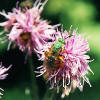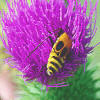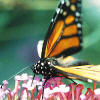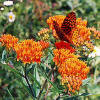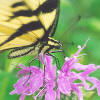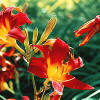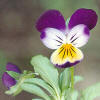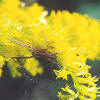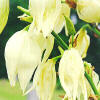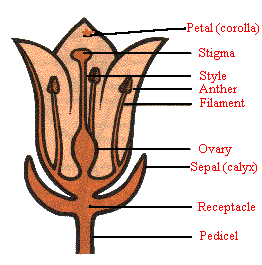|
|
|
|
|
CO 1601: Introduction to Computing
This website is created in line with CO 1601: Introduction to Computing. This site aims to introduce to audience especially students to learn and study in-depth on Sexual Reproduction in Flowers and Plants as well as teachers who wanted to use this site as teaching tool. Lastly, we would like to express our gratitude to Dr. Brown who had guided us in building a website. Thank you and enjoy.
|
|
What is Sexual Reproduction? Sexual reproduction is a process involving the fusion (joining together) of a male sex cell (male gamete) and female sex cell (female gamete) to form a zygote.
What is Flower?
Sexual reproduction is common in higher organisms.
Male sex cell + Female sex cell = Zygote
The Male Reproductive Organ in a Flower
The stamen is the male sex structure (male reproductive organs). Each stamen consists of the filament and the anther. Filament is a stalk-like structure that holds the anther. The anther contain pollen sacs which make and then release pollen grains. The pollen grains contain the male gametes.
The Female Reproductive Organ in a Flower
The carpel (pistil) is the female part of the
flower. Each carpel consists of the stigma, style and
ovary. The ovary is the swollen base of the carpel. It
contains one or more ovules. The ovule contains the female
gamete. The style is the stalk attached to the top of the ovary.
The stigma is sticky, it receives the pollen grains during
pollination.
Diagram of a microscopic pollen grain and pollen sac
Pollen sac Pollen grain
Pollination
Pollination is the transfer of pollen grains from the anther of a flower to the stigma of the same or a different flower.
Two Types of Pollination
In
Self – pollination, pollen is transferred from the anther to the
stigma of the same flower, or another flower on the same plant.
Cross-pollination
is preferred from self-pollination because they can lead to
cross-fertilization (outcrossing) and it is genetically advantageous.
While self-pollination only leads to self-fertilization which
reduces genetic diversity.
The
two most common agents for carrying pollen are the wind and
insects. ------------------------------------------------------------------------------------------------
You can view more details about this topic on websites listed below: http://en.wikipedia.org/wiki/coevolution http://www.mbgnet.net/bioplants http://en.wikipedia.org/wiki/Flowering_plant http://waynesword.palomar.edu/trmar98.htm
|
|
Done by:

Year 2 in B. Ed General Science (2005/2006)
05B0759




